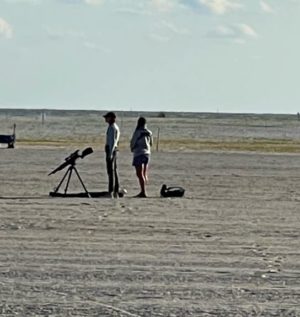After receiving this photo from one of our readers on the south end of Fort Myers Beach we reached out to the Florida Fish and Wildlife Conservation Commission to see what was going on. Here’s what they told us about why two of their officers killed 7 seagulls.
An FWC Spokesperson sent us the following statement about why the seagulls were being shot: “In early May, FWC shorebird biologists documented laughing gulls eating unhatched eggs of a least tern colony nesting at the Carlos Beach Seasonal Refuge in Fort Myers Beach. Least terns are a state-Threatened species and if no management action is taken, predation by laughing gulls can cause all nesting to fail at a least tern colony. Predation is among the biggest threats for state-Threatened shorebird nests and seabird colonies. Therefore, FWC staff conducted predation management at this nesting colony to help conserve this imperiled species. The activity was permitted, had the landowners permission, and occurred in a closed area with Law Enforcement present.
“People can help protect threatened shorebirds on beaches by removing trash and other food attractants that may encourage crows, gulls, and other predators to linger on beaches. People also can help by not feeding wildlife, including sea gulls. Feeding wildlife can lead to an overabundance of predators at these sites, which can exacerbate the imbalance of predator and prey populations.”
The area the seagulls were being shot is south of the Critical Wildlife Area in the large Big Carlos nesting area. When we followed up with FWC with the question of how many are killed and how FWC knows killing them works, here’s the response: “The FWC documents predation at a site and evaluates the need for a response on a case-by-case basis. In this instance, staff determined the best action was to quickly mitigate laughing gull predation upon least tern eggs by selectively removing individual laughing gulls observed actively targeting least tern nests. No effective, non-lethal, methods are currently available to keep gulls away from least tern eggs at this early stage of nesting, and gull predation that is not addressed quickly is known to result in more gulls being attracted to the area. Early intervention is intended to both improve nesting outcomes of least terns and prevent more gulls from learning to target the colony, thus minimizing the number of gulls that need to be removed. The FWC has removed a total of seven gulls from this site over the course of this year. Staff will continue to monitor the least tern colony to document nesting outcomes.”


Comments are closed.